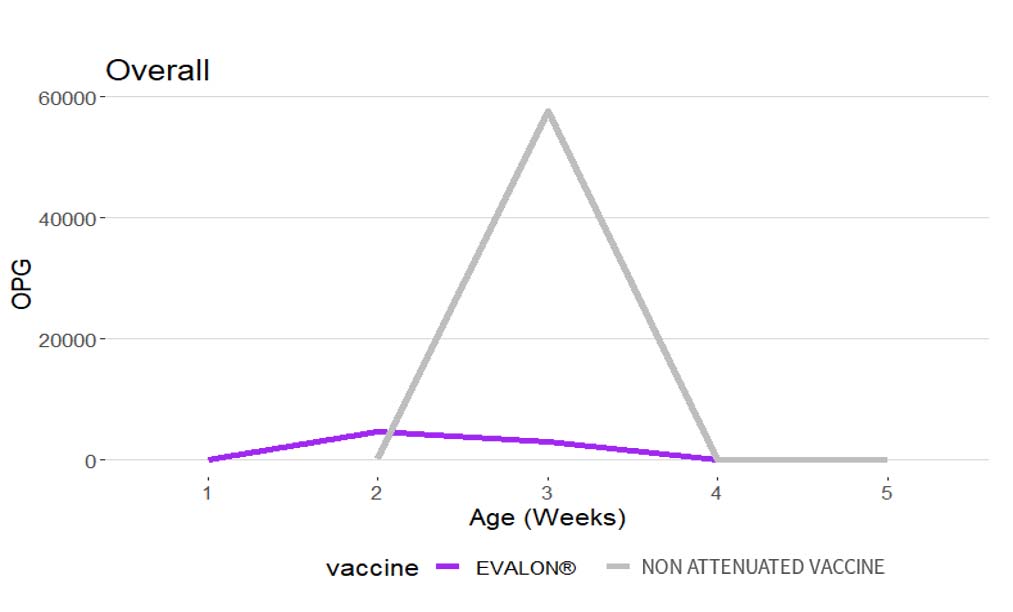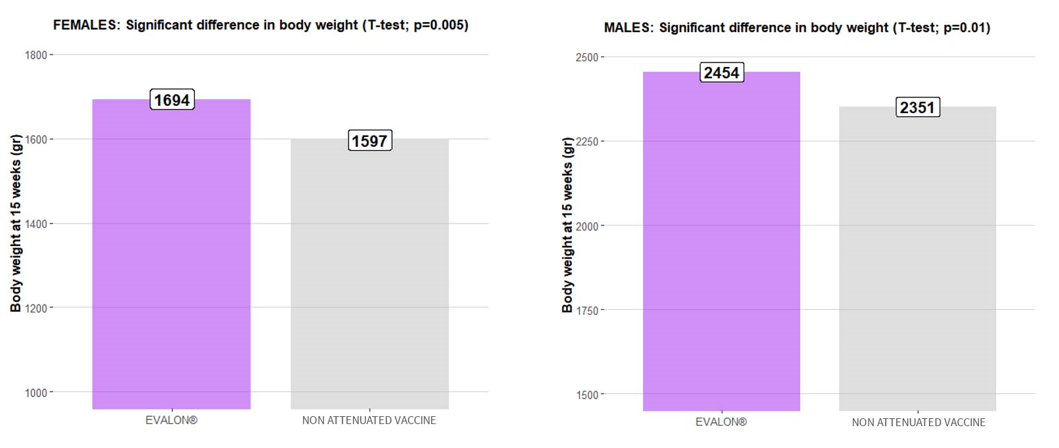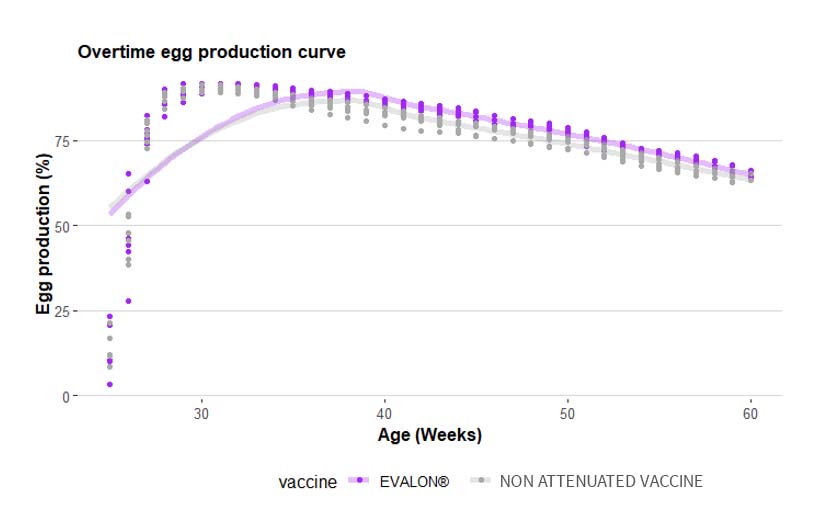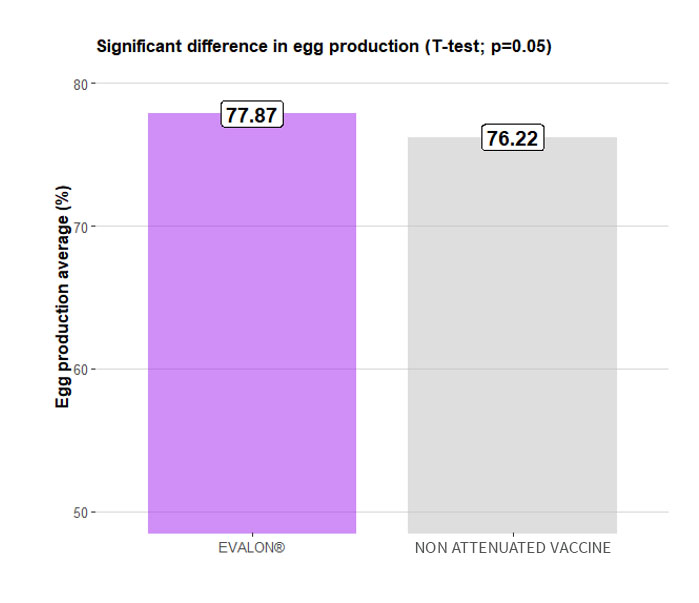Year by year, genetics companies are moving towards more resistant and sustainable breeders, capable of producing 15 more day-old chicks per housed hen than 10 years ago. To keep up with the annual genetic improvement of these birds, the degree of attenuation of the coccidia vaccine plays a key role, more than we imagine.
High environmental resistance ability to disinfectants and the lack of new anticoccidial drugs have resulted in coccidiosis becoming one of the most important causes of economic losses in the poultry business. In this context, new strategies such as vaccination have provided better control of coccidiosis, maintaining the efficacy of anticoccidial drugs, and delaying the appearance of resistance through the replacement of wild strains with sensitive vaccinal strains.
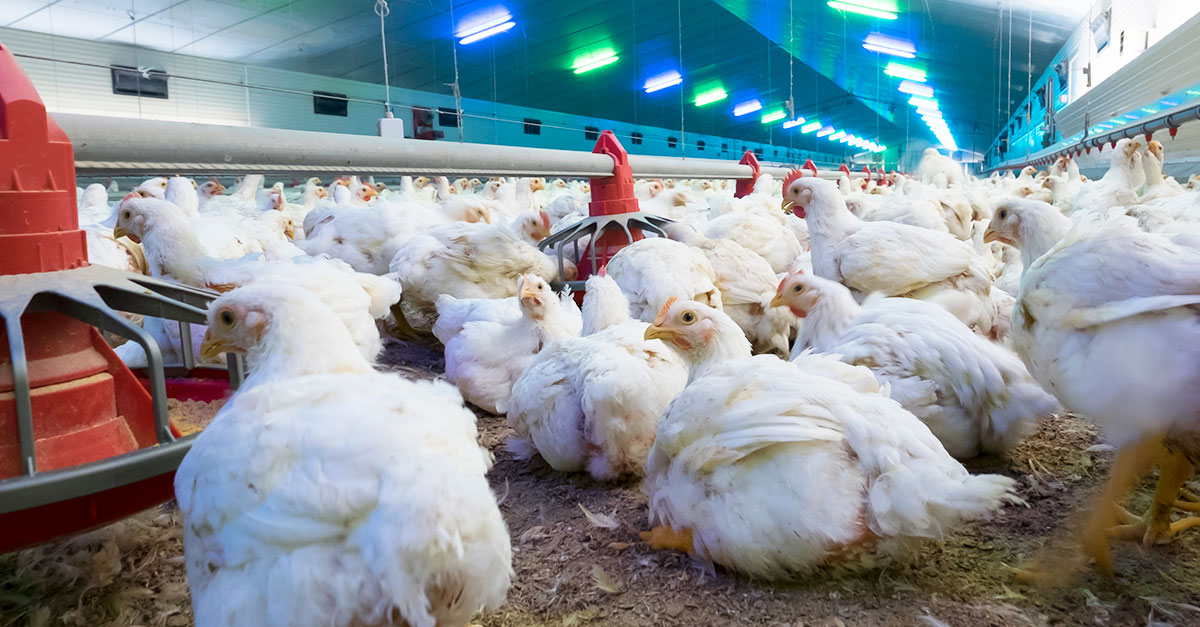 In broiler and layer breeders, birds with a high cost and a higher value, the attenuation of the live Eimeria strains present in the vaccine plays a key role in inducing a proper and long-lasting immunity, without causing gut damage that can impact on performance parameters during the rearing and laying period.
In broiler and layer breeders, birds with a high cost and a higher value, the attenuation of the live Eimeria strains present in the vaccine plays a key role in inducing a proper and long-lasting immunity, without causing gut damage that can impact on performance parameters during the rearing and laying period.
Among Eimeria vaccines, we can find the live non-attenuated ones, that cause a greater degree of damage as replication lasts longer, resulting in some cases in the use of anticoccidial drugs. And the other option is vaccine strains attenuated by precociousness, where the speed of replication is higher, reducing the damage caused in the gut during the asexual phase of the schizogony.
When comparing these types of vaccines at field level, as expected, the greater degree of damage caused by the non-attenuated vaccines reduces the uniformity of the flock and increases the FCR, impacting efficiency and the gut health of the breeders.
In order to prove these statements, in the following field trial performed in Asia, two flocks from the same poultry company with the same genetics, ventilation, lighting programme, density and the same vaccination programme, excluding the Eimeria vaccine, were compared. Data on OPG counts, total bodyweight, % mortality and % egg production are shown below.
1. OPG Counts
As mentioned above, the vaccines attenuated by precociousness induce a faster immunisation with less damage, whereas replication lasts longer with non-attenuated vaccines with noticeable high OPG counts, inducing gut damage as well.
2. Higher bodyweight at week 15 with the same feed management
The bodyweight at week 15 is 97g (females) and 103g (males) higher in the group vaccinated with a vaccine attenuated by precociousness.
3. Higher egg-laying performance
By improving gut health from the rearing period, the whole organism will perform better during the laying period as can be clearly seen. Egg-laying performance was 2.1% higher in the group vaccinated with strains attenuated by precociousness, meaning that +4.2 hatchable eggs are sent to the hatchery, returning a higher income to the breeder farm.
4. Lower mortality rates
Males were not considered in this comparison, as the mortality in the males also depended on other factors such as female/male ratio or mating abilities.
Evaluating only the females, there was a 5.2% lower mortality in the attenuated by precociousness group, meaning that with the same starting flock, more females can be kept in the house, depending on the attenuation degree of the coccidia vaccine.
In conclusion, high quality breeders require high quality vaccines.
As is well known, a vaccine attenuated by precociousness will have a higher associated cost, but if the benefits in terms of gut health, mortality, bodyweight and laying performance of the breeders are evaluated carefully, the difference will pay off in terms of more day-old chicks and viability for the same number of breeders.

